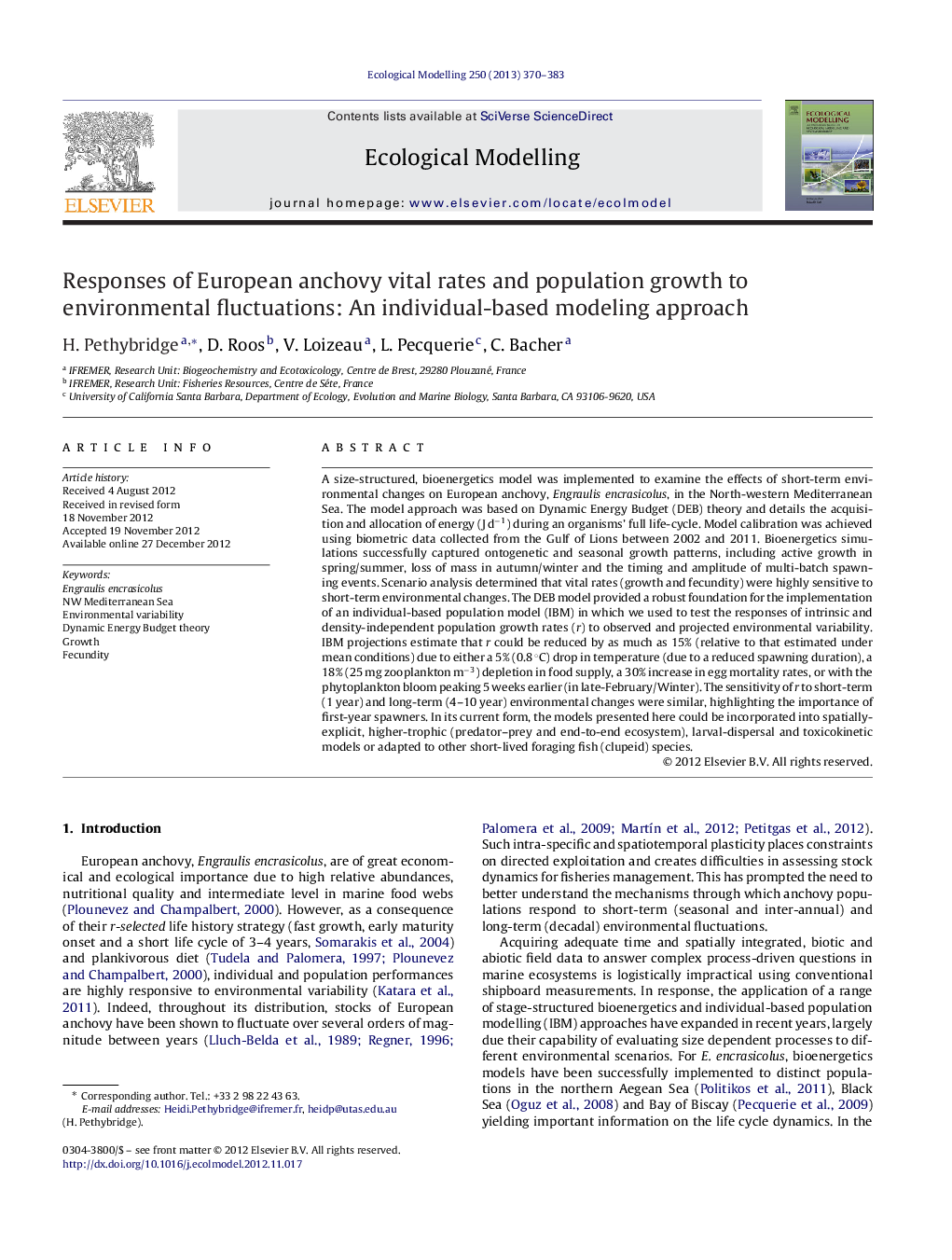| کد مقاله | کد نشریه | سال انتشار | مقاله انگلیسی | نسخه تمام متن |
|---|---|---|---|---|
| 4376265 | 1617495 | 2013 | 14 صفحه PDF | دانلود رایگان |

A size-structured, bioenergetics model was implemented to examine the effects of short-term environmental changes on European anchovy, Engraulis encrasicolus, in the North-western Mediterranean Sea. The model approach was based on Dynamic Energy Budget (DEB) theory and details the acquisition and allocation of energy (J d−1) during an organisms’ full life-cycle. Model calibration was achieved using biometric data collected from the Gulf of Lions between 2002 and 2011. Bioenergetics simulations successfully captured ontogenetic and seasonal growth patterns, including active growth in spring/summer, loss of mass in autumn/winter and the timing and amplitude of multi-batch spawning events. Scenario analysis determined that vital rates (growth and fecundity) were highly sensitive to short-term environmental changes. The DEB model provided a robust foundation for the implementation of an individual-based population model (IBM) in which we used to test the responses of intrinsic and density-independent population growth rates (r) to observed and projected environmental variability. IBM projections estimate that r could be reduced by as much as 15% (relative to that estimated under mean conditions) due to either a 5% (0.8 °C) drop in temperature (due to a reduced spawning duration), a 18% (25 mg zooplankton m−3) depletion in food supply, a 30% increase in egg mortality rates, or with the phytoplankton bloom peaking 5 weeks earlier (in late-February/Winter). The sensitivity of r to short-term (1 year) and long-term (4–10 year) environmental changes were similar, highlighting the importance of first-year spawners. In its current form, the models presented here could be incorporated into spatially-explicit, higher-trophic (predator–prey and end-to-end ecosystem), larval-dispersal and toxicokinetic models or adapted to other short-lived foraging fish (clupeid) species.
► IBM implemented for European anchovy, an important ecological and economical species.
► Mean ontogenetic and seasonal growth and fecundity patterns were accurately captured.
► High variation in anchovy vital rates can be explained by the model.
► Population growth rate (r) sensitivity to climate scenarios are quantified.
► A 0.8 °C drop in temperature could cause a 15% decline in r.
Journal: Ecological Modelling - Volume 250, 10 February 2013, Pages 370–383